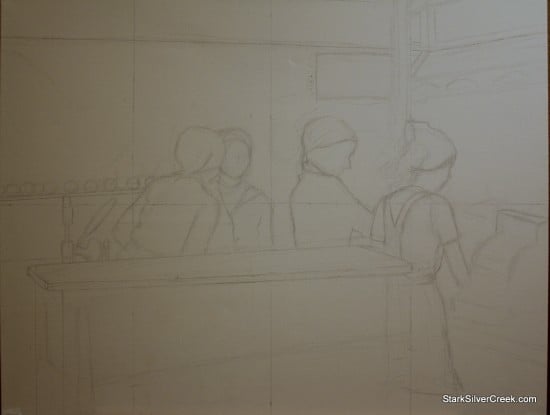
The progress on my latest oil painting is slower than I would like . There are several factors contributing to this. Firstly, there have been a number of StarkSilverCreek events that have conflicted with my Saturday oil painting class which I just could not move to another time. Secondly, I have not been disciplined enough these past weeks to carve out at least 1/2 hour each evening to paint. I vow to improve upon this.
Speaking of conflicting engagements, I attended Stanford University’s “Leading Matters” event this past Saturday. One of the sessions I participated in was entitled, “Innovation Is a Process, Not a Flash.” More to come on this particular session, but for the purposes of this discussion, there were two elements of the session that really applied to my pursuit of becoming an oil painter.
In the session, David Kelley, founder of IDEO and moderator of the session noted that Stanford’s Institute of Design (more affectionately referred to as d.school) helps people develop “creative confidence”. He expounded that everyone has an innate desire to think of themselves as creative. I really identified with this because I know personally, I enjoy not only the creative process, but relish in the idea that I could possibly bring into this world something beautiful or useful that didn’t previously exist. Based on the books I’ve been reading on the study of the human brain and its uniqueness compared to brains of other species, I think the desire and ability to create is also what makes us human. Neurologists talk about the special part of the brain that provides foresight and the ability to extrapolate something new from pieces of what exists.
The second element that I really connected to my experiences as a oil painting student is the idea of prototyping. Diego Rodriguez, consulting associate professor at d.school and partner at IDEO, emphasized that one of the key things they teach students at d.school is to prototype. In fact, office sessions are sometimes held where students are only admitted if they have a prototype of their idea. The concept here is that there are human-centric design considerations that can only be realized if one tries out prototypes, get feedback and quickly iterates. Student must go through this process before consuming a professor’s time. This is instead of the common process of coming up with something you think is near perfect and then finding out (usually inevitably) there were missed design considerations. Instead, on first pass, the idea is to create something “crummy”.
As I was looking at the blocking (pencil sketch) of my latest oil painting, I realized that blocking was a form of prototyping. You get the opportunity to quickly place the people and objects on canvas, make sure you have proper proportions and the composition works before applying paint to canvas. Even after you do start painting, if a portion of the painting does not look right, it is expected you go back and correct it. Along the way you get the opinion of others.
And this, dear reader, is just what happened to me today as I was examining the sketch. I realized that the girls in the sketch are too elongated and so I need to correct it. I did feel a tinge of frustration but I am also glad I prototyped the painting early instead of finding out after the painting is near complete.


